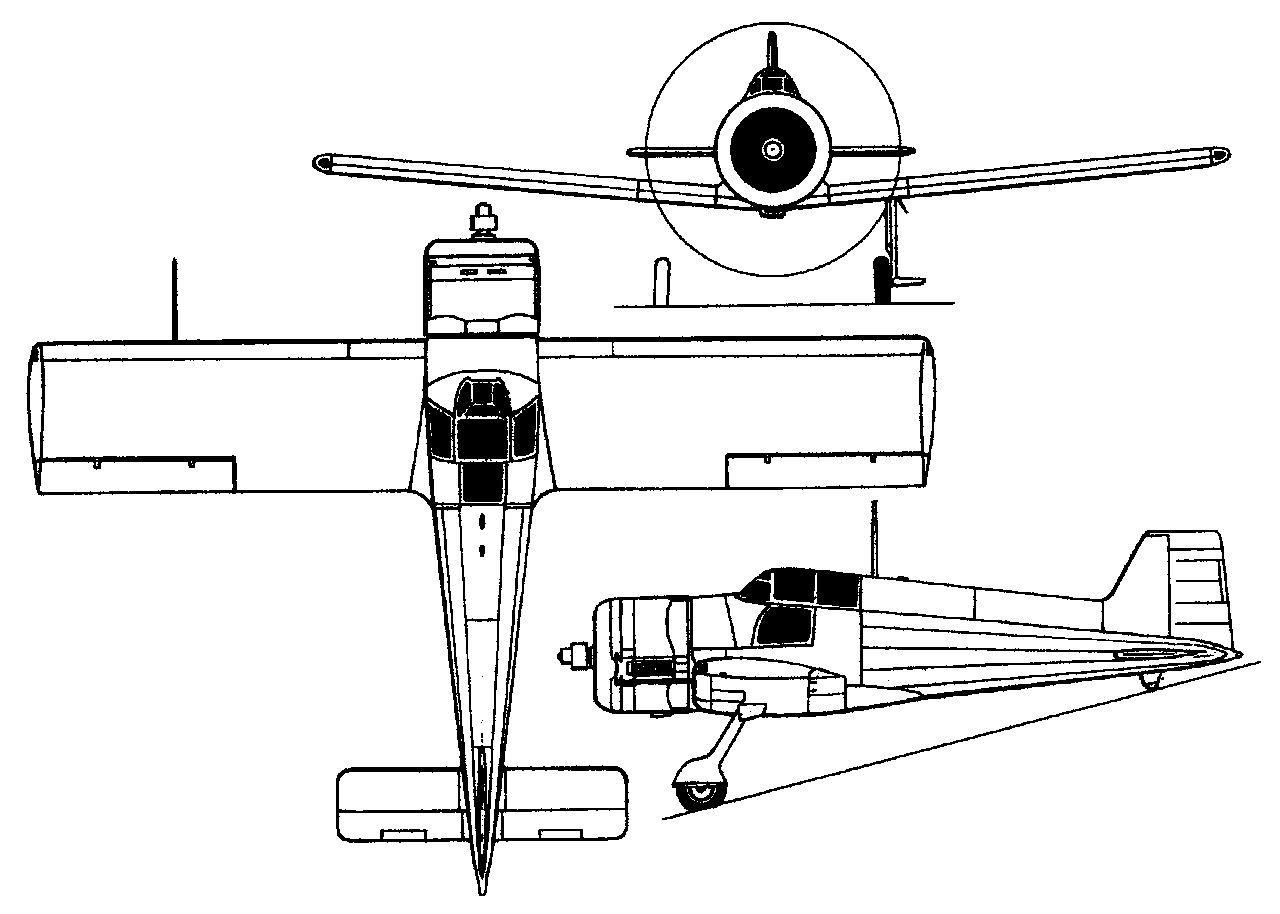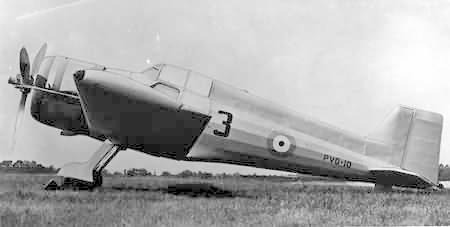- Yes
- No
Vickers Type 279 Venom
Vehicle design and history:
The Vickers Venom was a fighter designed to meet Air Ministry Specification F.5/34, and like the majority of it peers was fitted with a radial engine in order to meet the required tropical performance. As with the other F.5/34 aircraft, it was equipped with 8 growing machine guns, and could achieve a performance in excess of 300mph. For airframe design Vickers heavily based their entry on their earlier Type 151 Jockey, which was an early attempt at an intercepted fighter. The design used the same wing and tail design down to the dimensions, but replaced the previous ribbed construction with a smooth stressed-skin structure making the plane immediately appear more modern from a glance.
To this end the Venom, was a low-wing monoplane, with square-tipped constant-chord wings and tail plane. This design philosophy extended to the tail fin, which was also square-tipped and angular. The pilot was positioned over the wing, in a position that would offer better downwards and side views, further accentuated by the additional windows installed in the perspex cockpit. The entire fuselage was an aluminium monocoque structure, with the wings being stressed. The flaps installed in the wings could extend up to 90 degrees, allowing better control during low airspeeds. The Venom was powered by a 625 hp (466 kW) Bristol Aquila AE-3S sleeve valve radial engine, which was hinge-mounted to be swung sideways for easy of access for maintenance.
The aircraft was publicly unveiled in 1936, and was unpainted to show off the polished metal of its construction, a common thing at the time to show its lightweight construction. Due to the fabric control surfaces, they were painted silver. Under this appearance the Venom briefly flower with the company reg of PVO-10, in reference to how the aircraft was a private venture from Vickers. This aircraft would soon be tested, and despite the limited power of the Aquila, it achieve a max airspeed of 312 mph, along with a good climb rate. Unfortunately for the Venom, the Rolls-Royce Merlin engine that powered some of its contemporaries like the Spitfire was simply more powerful, and the older-based design of the Jockey prevented the airframe from being modified to accommodate it. Due to this lack of future improvement possibilities compared to its peers, no orders for the Venom were placed, though the single prototype was retained after testing. The reason for this culling of the program is obvious when one becomes aware that the Vickers-Supermarine group existed, so why would the consortium self-cannibalise on profits with a secondary design that was inferior to the Spitfire. Due to this abandonment,t the only prototype was scrapped in 1939 after it had sat engineless in a hangar for quite some time, due to the original engine being rented from Bristol at a fixed rate, requiring to to be returned after testing concluded.
Vehicle specification:

General characteristics
Crew: 1
Length: 24 ft 2 in (7.37 m)
Wingspan: 32 ft 9 in (9.98 m)
Height: 10 ft 9 in (3.28 m)
Wing area: 146 sq ft (13.6 m2)
Gross weight: 4,156 lb (1,885 kg)
Powerplant: 1 × Bristol Aquila AE-3S nine-cylinder sleeve valve radial, 625 hp (466 kW)
Performance
Maximum speed: 312 mph (502 km/h, 271 kn) at 16,500 ft (5,000 m)
Service ceiling: 32,000 ft (9,800 m)
Rate of climb: 3,000 ft/min (15 m/s)
Armament
8 × 0.303 in (7.7 mm) Browning machine guns
Additional photos:











Below is an interesting video of the Venom showing the way the nose opened for ease of maintenance, something that at the time was a new innovation, and Vickers was keen to market:
Sources:
- Vickers Venom fighter (History)
- Vickers Venom - Wikipedia (Wikipage for type)
- https://www.baesystems.com/en-uk/heritage/vickers-experimental-fighters (Mention of type on BAE website)
- Vickers 279 Venom - fighter (More history)




